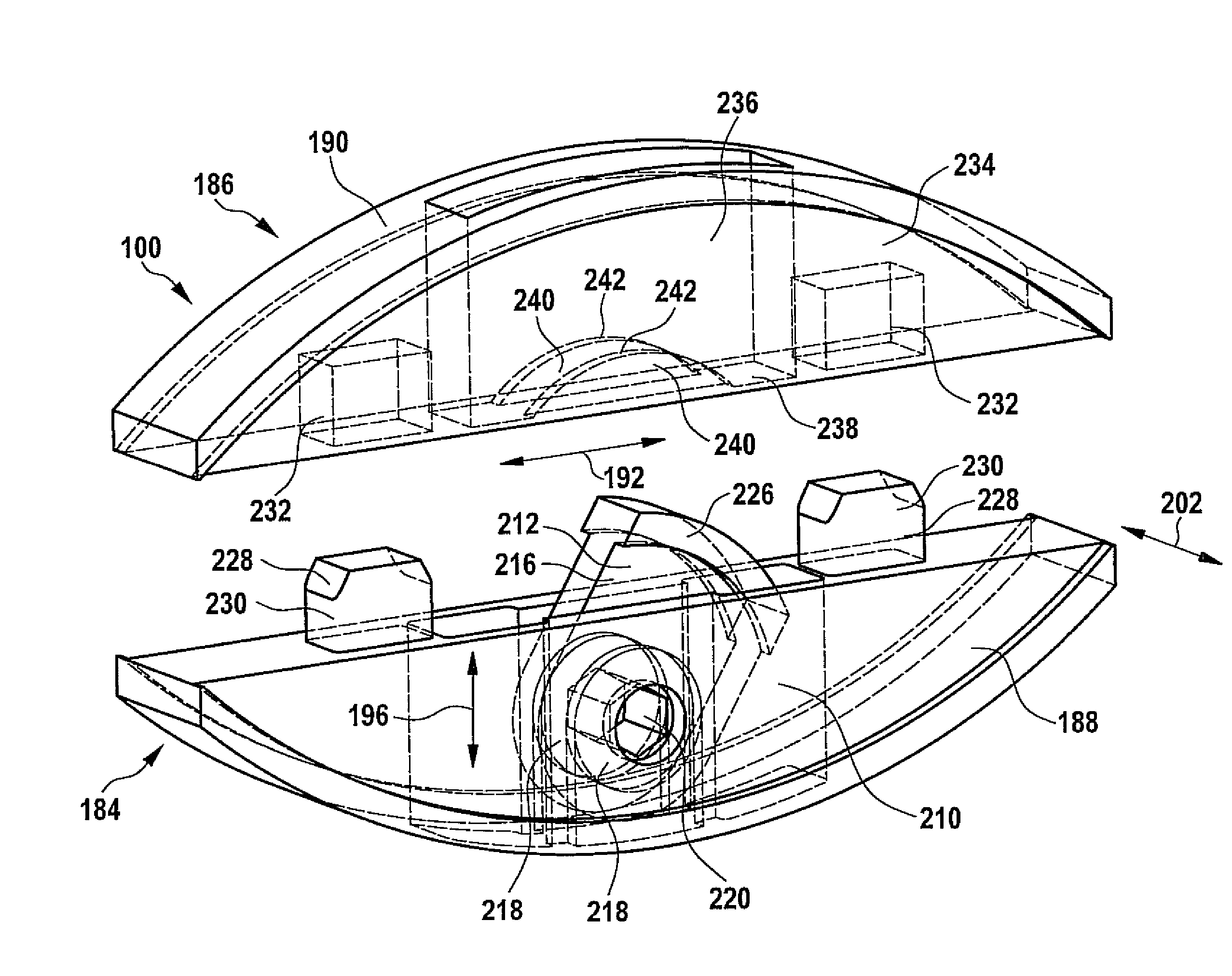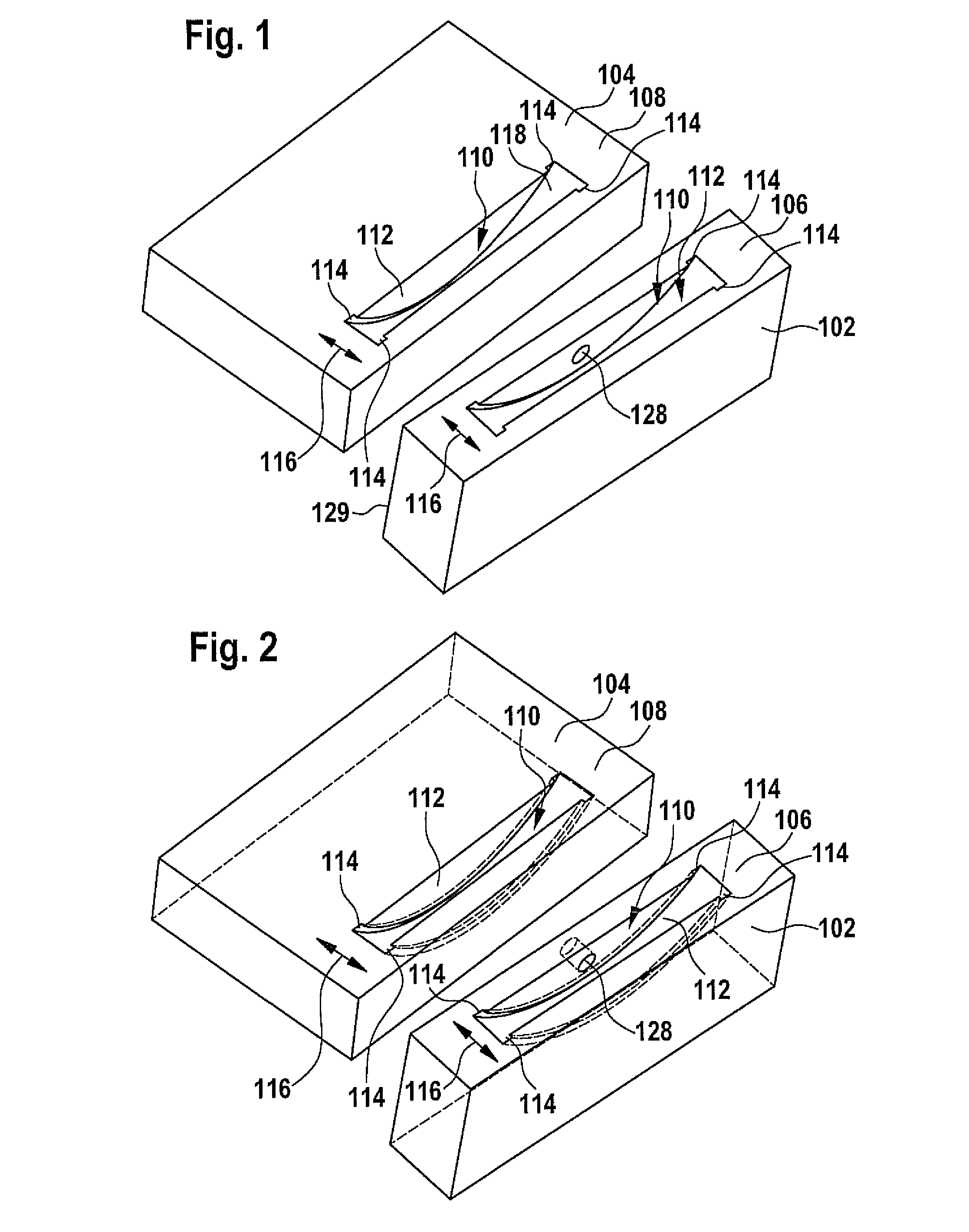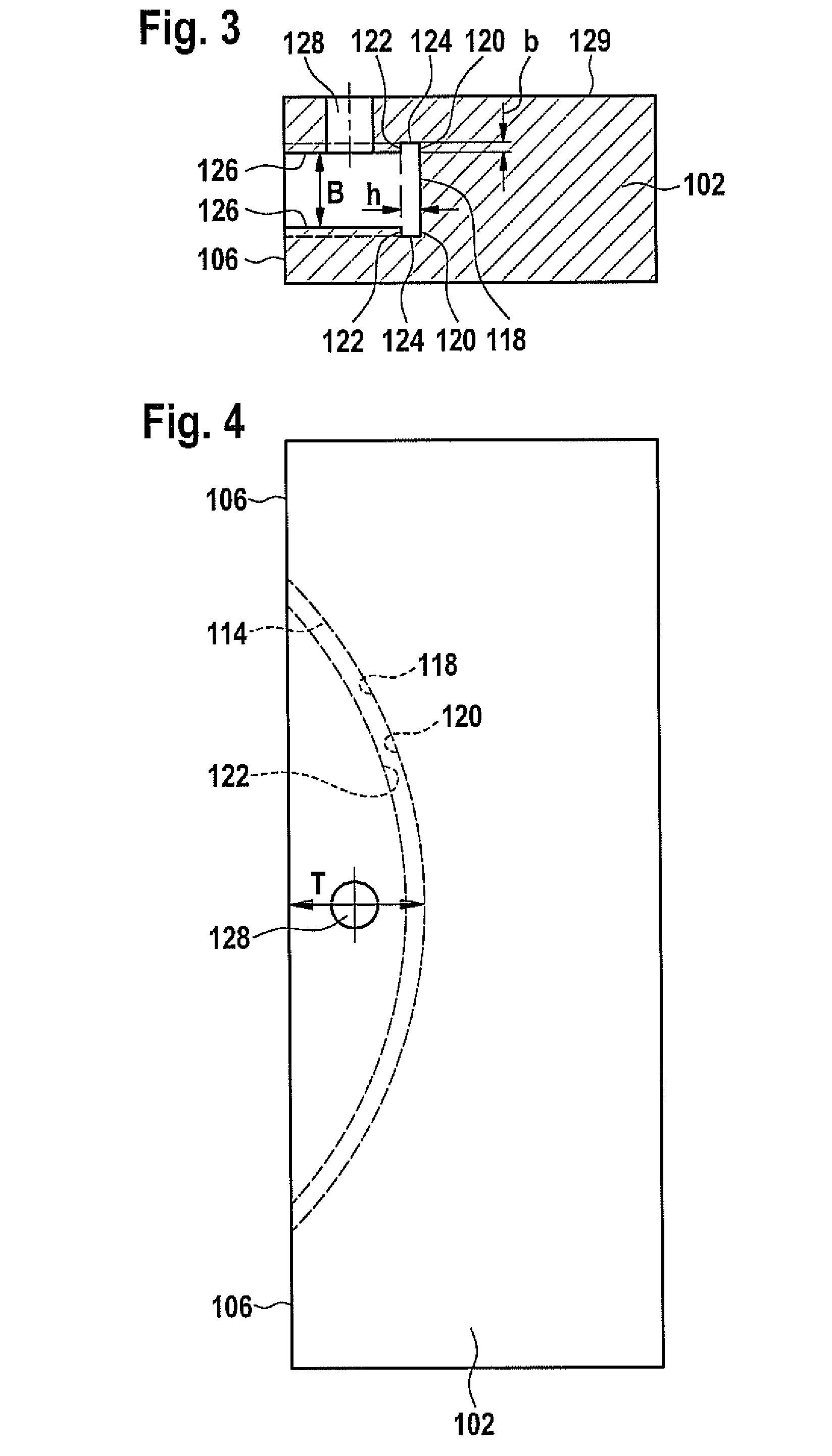Connecting means and method of producing a connection between a first component and a second component
a technology of connecting means and components, applied in the direction of rod connections, large fixed members, furniture joining, etc., can solve the problems of lateral walls of respective components being broken, the process of driving half-fittings into the components along the self-cutting edges is extremely difficult or even completely impossible,
- Summary
- Abstract
- Description
- Claims
- Application Information
AI Technical Summary
Benefits of technology
Problems solved by technology
Method used
Image
Examples
first embodiment
[0138]a connecting means which is illustrated in FIGS. 1 to 9 and bears the general reference 100 is explained in the following using the example of the connection of a first substantially plate-like component 102 to a second likewise substantially plate-like component 104 (see FIGS. 1 to 4).
[0139]The two components 102 and 104 consist for example of wood or plywood, but could consist of any other type of material, for example, of a metallic material or a synthetic material (for example plexiglass). Furthermore, provision may be made for the first component 102 and the second component 104 to consist of materials differing from each other.
[0140]In the connected state of the two components 102 and 104 which is illustrated in FIG. 7, a contact area 106 forming a narrow side of the first component 102 abuts a contact area 108 of the second component 104 which forms a major face of the plate-like second component 104.
[0141]A respective groove 110, which is formed in the relevant compone...
second embodiment
[0237]For the purposes of establishing the connection between the first component 102 and the second component 104, the first connecting element 184 and the second connecting element 186 of the connecting means 100 are inserted into the respective grooves 110 of the first component 102 and the second component 104.
[0238]Then, the second component 104 with the second connecting element 186 is placed on the first component 102 with the first connecting element 184 in such a way that the external thread 248 of the threaded element 246 extends through the access channel 272 of the second connecting element 186 into the seating chamber 250 and comes into engagement with the internal thread 270 of the restraining element 252.
[0239]Subsequently, the threaded element 246 is set into rotation about the rotational axis 268 by means of the (not illustrated) actuating element (a screwdriver for example) which engages in the seating 256 in the head part 254 of the threaded element 246 through an...
third embodiment
[0272]For the purposes of establishing the connection between the first component 102 and the second component 104 by means of the connecting means 100, one proceeds as follows:
[0273]After the first connecting element 184 and the second connecting element 186 have been inserted into the respective grooves 110 of the first component 102 and the second component 104, the second component 104 with the second connecting element 186 is moved against the first component 102 with the first connecting element 184 in such a way that the internal thread 282 of the threaded element 278 comes into engagement with the external thread 314 of the restraining element 316.
[0274]The insertable projections 228 also penetrate the seating pockets 232 of the second connecting element 186 that are complementary thereto and the hump-like raised portion 274 of the first connecting element 184 enters the depression 276 in the second connecting element 186 that is complementary thereto.
[0275]Subsequently, in ...
PUM
| Property | Measurement | Unit |
|---|---|---|
| area | aaaaa | aaaaa |
| thickness | aaaaa | aaaaa |
| thickness | aaaaa | aaaaa |
Abstract
Description
Claims
Application Information
 Login to View More
Login to View More - R&D
- Intellectual Property
- Life Sciences
- Materials
- Tech Scout
- Unparalleled Data Quality
- Higher Quality Content
- 60% Fewer Hallucinations
Browse by: Latest US Patents, China's latest patents, Technical Efficacy Thesaurus, Application Domain, Technology Topic, Popular Technical Reports.
© 2025 PatSnap. All rights reserved.Legal|Privacy policy|Modern Slavery Act Transparency Statement|Sitemap|About US| Contact US: help@patsnap.com



